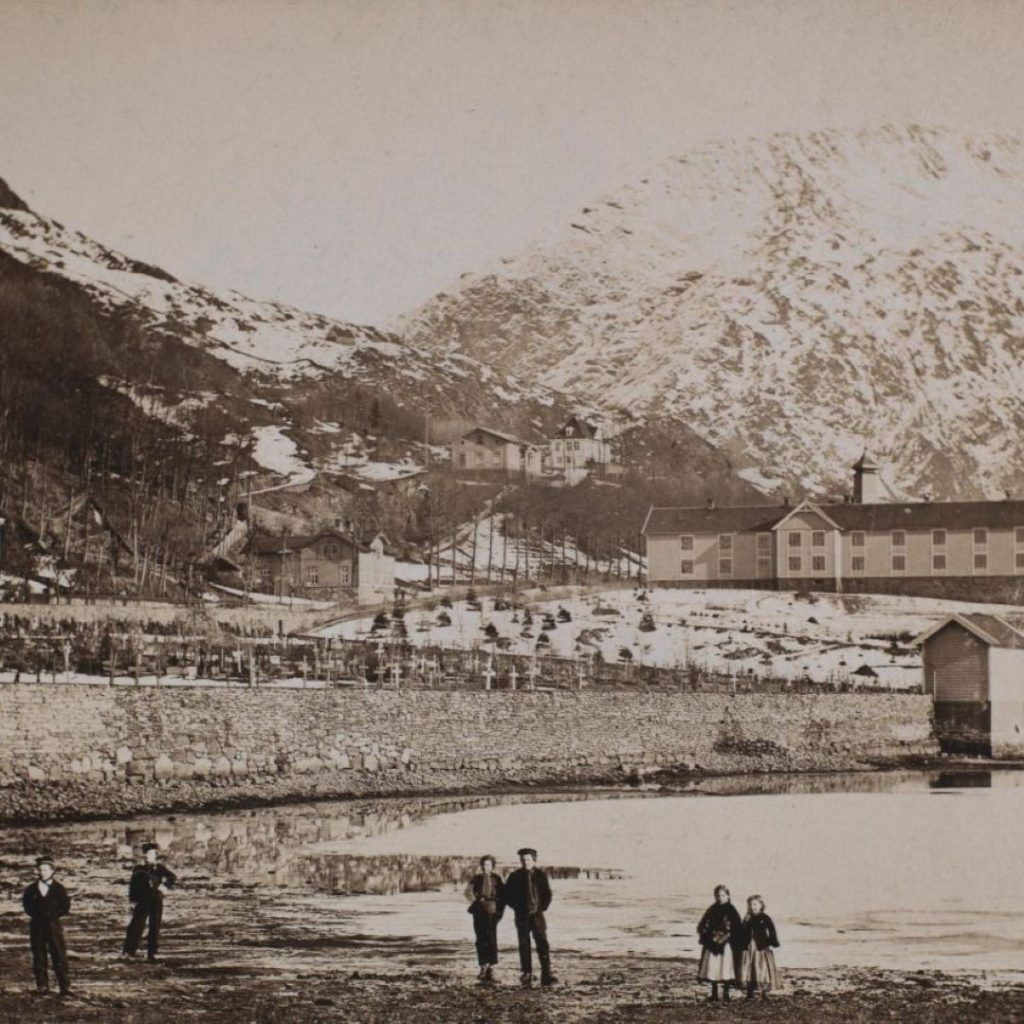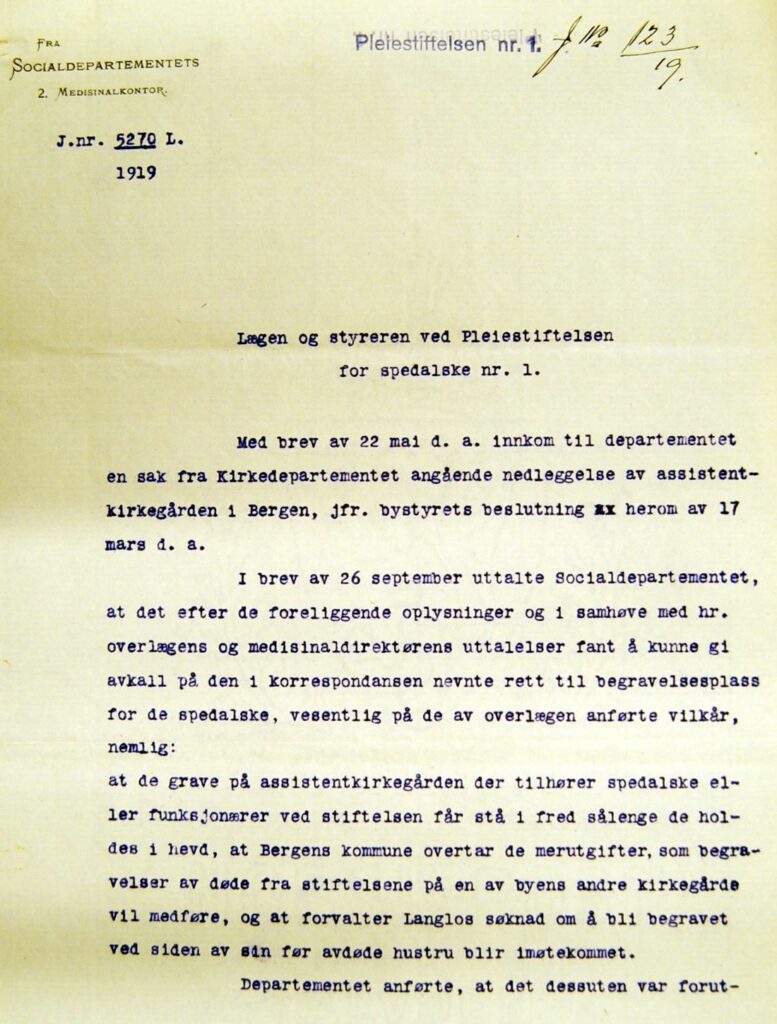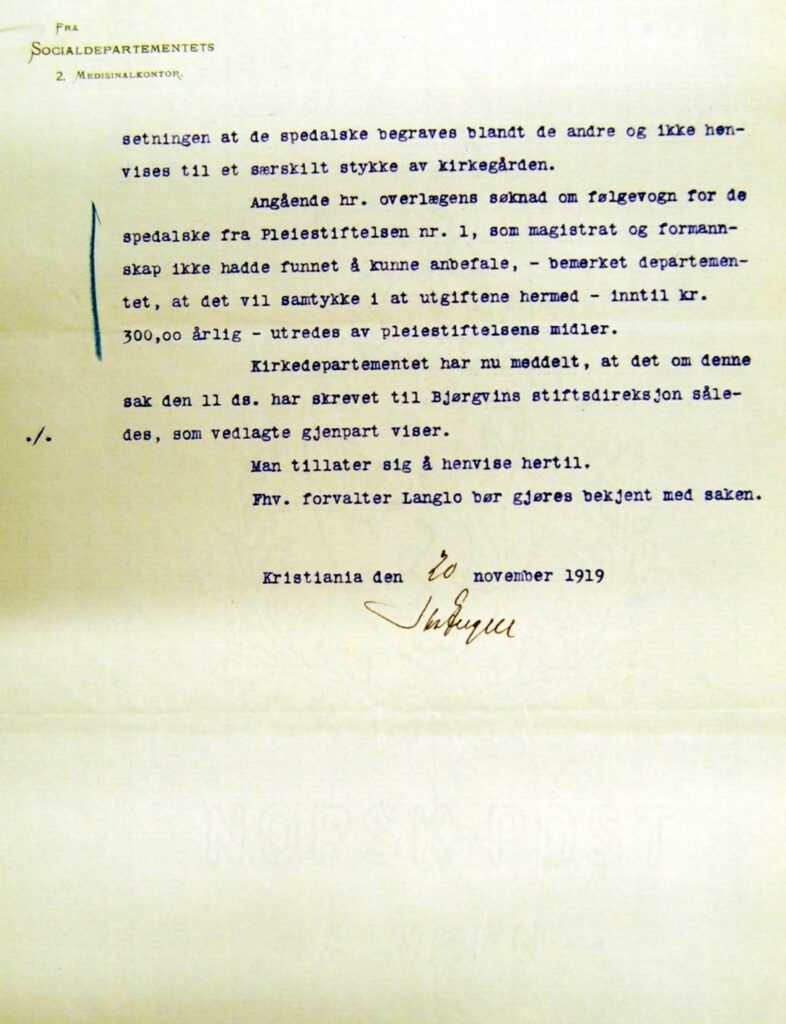Leaving Pleiestiftelsen Hospital
The majority of those admitted to Pleiestiftelsen Hospital lived there until they died, but this was not always the case. Some returned home, with or without permission, and some applied to be transferred to other hospitals, in particular to St. Jørgen’s Hospital. In 1860, 59 of the 67 residents registered as leaving the hospital were deceased. Of the remaining eight, one had been allowed to move to Lungegård Hospital because her child had been admitted there, while seven had left the hospital altogether. Of these seven, one was allowed to go home because he was so homesick that the doctor did not ‘find it advisable to keep him there’ and one had to leave because of ‘mental illness’. Five had left the hospital without permission. Three of them had been allowed to travel home for a short period during the summer but failed to return.
In 1868, 41 people were removed from the patient lists. Of these, 33 were deceased, one was granted a transfer to St. Jørgen’s Hospital, three were discharged at ‘their own request’ and four left the hospital because of homesickness. Some were even discharged because it was found they didn’t have leprosy after all, or because they were considered cured. One of the most curious reasons given for leaving the hospital is the case of a man who, in 1864, was allowed to leave the hospital because his wife could ‘in no way tolerate him staying there any longer, although he himself enjoyed being there’.

Photo: Marcus Selmer. 1861. The University of Bergen Library.


Letter from Ministry of Social Affairs to the doctor at Pleiestiftelsen in 1919, concerning the closure of Assistentkirkegården cemetery, on the condition that the graves of the previous residents and staff remain undisturbed for as long as they are maintained, and that the City of Bergen, who enacted the closure of the cemetery, would cover the additional expenses incurred from using other cemeteries. It was also a prerequisite that the residents of Pleisetiftelsen buried in other cemeteries were not to be relegated to a separate section of the cemetery, but were to be buried alongside other city residents. The ministry also approved that expenses for a carriage, which would allow other residents to follow the deceased to their grave, were to be covered by Pleiestiftelsen.
The Regional State Archives of Bergen.



